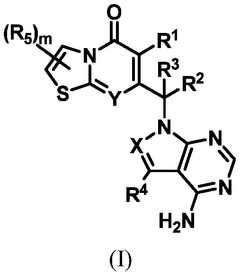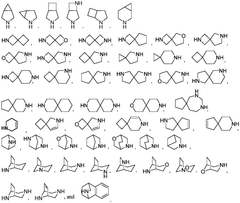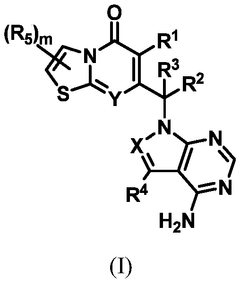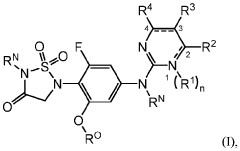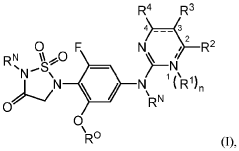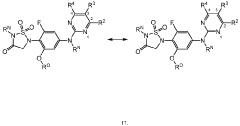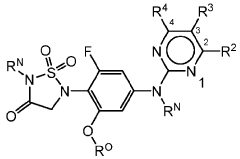The Role of Geometric Isomers in Biomimetic Catalysis
AUG 1, 20259 MIN READ
Generate Your Research Report Instantly with AI Agent
Patsnap Eureka helps you evaluate technical feasibility & market potential.
Biomimetic Catalysis Background and Objectives
Biomimetic catalysis has emerged as a pivotal field in modern chemistry, drawing inspiration from nature's elegant and efficient catalytic systems. This approach seeks to emulate the remarkable specificity and efficiency of enzymes, which have been refined through millions of years of evolution. The study of geometric isomers in this context represents a significant frontier in the development of advanced catalytic systems.
The evolution of biomimetic catalysis can be traced back to the mid-20th century when chemists began to recognize the potential of mimicking biological processes. Since then, the field has experienced exponential growth, driven by advancements in structural biology, computational chemistry, and materials science. The integration of geometric isomerism into this domain marks a crucial step towards achieving more sophisticated and selective catalytic processes.
Geometric isomers, compounds with the same molecular formula but different spatial arrangements of atoms, play a fundamental role in many biological systems. In nature, enzymes often exhibit exquisite selectivity for specific geometric isomers, a property that chemists aim to replicate in synthetic catalysts. This selectivity is critical in various applications, from pharmaceutical synthesis to materials production, where the spatial configuration of molecules can dramatically affect their properties and functions.
The primary objective of research in this area is to design and synthesize catalysts that can differentiate between geometric isomers with high precision. This goal encompasses not only the ability to selectively produce desired isomers but also to recognize and transform specific isomeric forms in complex mixtures. Such capabilities would revolutionize numerous industrial processes, enabling more efficient and environmentally friendly production methods.
Another key aim is to understand the underlying mechanisms by which geometric isomers interact with catalytic sites. This knowledge is essential for rational catalyst design and for predicting the behavior of new catalytic systems. Researchers are particularly interested in elucidating how subtle changes in molecular geometry can influence binding affinity, reaction rates, and product distributions.
Furthermore, the field seeks to expand the scope of biomimetic catalysis beyond traditional organic reactions. There is growing interest in applying these principles to inorganic systems, materials science, and even in the development of artificial enzymes. The ultimate vision is to create a new generation of catalysts that combine the best aspects of biological and synthetic systems, offering unprecedented control over chemical transformations.
The evolution of biomimetic catalysis can be traced back to the mid-20th century when chemists began to recognize the potential of mimicking biological processes. Since then, the field has experienced exponential growth, driven by advancements in structural biology, computational chemistry, and materials science. The integration of geometric isomerism into this domain marks a crucial step towards achieving more sophisticated and selective catalytic processes.
Geometric isomers, compounds with the same molecular formula but different spatial arrangements of atoms, play a fundamental role in many biological systems. In nature, enzymes often exhibit exquisite selectivity for specific geometric isomers, a property that chemists aim to replicate in synthetic catalysts. This selectivity is critical in various applications, from pharmaceutical synthesis to materials production, where the spatial configuration of molecules can dramatically affect their properties and functions.
The primary objective of research in this area is to design and synthesize catalysts that can differentiate between geometric isomers with high precision. This goal encompasses not only the ability to selectively produce desired isomers but also to recognize and transform specific isomeric forms in complex mixtures. Such capabilities would revolutionize numerous industrial processes, enabling more efficient and environmentally friendly production methods.
Another key aim is to understand the underlying mechanisms by which geometric isomers interact with catalytic sites. This knowledge is essential for rational catalyst design and for predicting the behavior of new catalytic systems. Researchers are particularly interested in elucidating how subtle changes in molecular geometry can influence binding affinity, reaction rates, and product distributions.
Furthermore, the field seeks to expand the scope of biomimetic catalysis beyond traditional organic reactions. There is growing interest in applying these principles to inorganic systems, materials science, and even in the development of artificial enzymes. The ultimate vision is to create a new generation of catalysts that combine the best aspects of biological and synthetic systems, offering unprecedented control over chemical transformations.
Market Analysis for Biomimetic Catalysts
The market for biomimetic catalysts, particularly those involving geometric isomers, has shown significant growth potential in recent years. This emerging field combines the principles of natural enzyme catalysis with synthetic chemistry, offering innovative solutions for various industries. The global market for biomimetic catalysts is expected to expand rapidly, driven by increasing demand for sustainable and efficient chemical processes.
Key industries benefiting from biomimetic catalysts include pharmaceuticals, fine chemicals, and environmental remediation. In the pharmaceutical sector, these catalysts play a crucial role in the synthesis of complex drug molecules, enabling more selective and environmentally friendly production methods. The fine chemicals industry utilizes biomimetic catalysts for the manufacture of specialty chemicals, fragrances, and flavors, where precise control over geometric isomerism is essential for product quality.
Environmental applications of biomimetic catalysts are gaining traction, particularly in water treatment and air purification processes. These catalysts offer enhanced efficiency in breaking down pollutants and contaminants, contributing to cleaner and more sustainable environmental solutions.
The market dynamics are influenced by several factors, including stringent environmental regulations, growing emphasis on green chemistry, and the need for cost-effective manufacturing processes. As industries seek to reduce their carbon footprint and improve overall efficiency, the demand for biomimetic catalysts is projected to rise steadily.
Regionally, North America and Europe currently lead the market due to their advanced research infrastructure and strong presence of pharmaceutical and chemical industries. However, Asia-Pacific is emerging as a rapidly growing market, driven by increasing industrialization and government initiatives promoting sustainable technologies.
Challenges in the market include the high cost of catalyst development and the complexity of scaling up biomimetic processes for industrial applications. Despite these hurdles, ongoing research and development efforts are expected to overcome these limitations, further expanding the market potential.
The role of geometric isomers in biomimetic catalysis adds another layer of sophistication to this market. The ability to control and manipulate geometric isomerism in catalytic processes opens up new possibilities for product development and process optimization across various industries. This aspect is particularly valuable in the production of pharmaceuticals and fine chemicals, where the spatial arrangement of molecules can significantly impact their properties and efficacy.
Key industries benefiting from biomimetic catalysts include pharmaceuticals, fine chemicals, and environmental remediation. In the pharmaceutical sector, these catalysts play a crucial role in the synthesis of complex drug molecules, enabling more selective and environmentally friendly production methods. The fine chemicals industry utilizes biomimetic catalysts for the manufacture of specialty chemicals, fragrances, and flavors, where precise control over geometric isomerism is essential for product quality.
Environmental applications of biomimetic catalysts are gaining traction, particularly in water treatment and air purification processes. These catalysts offer enhanced efficiency in breaking down pollutants and contaminants, contributing to cleaner and more sustainable environmental solutions.
The market dynamics are influenced by several factors, including stringent environmental regulations, growing emphasis on green chemistry, and the need for cost-effective manufacturing processes. As industries seek to reduce their carbon footprint and improve overall efficiency, the demand for biomimetic catalysts is projected to rise steadily.
Regionally, North America and Europe currently lead the market due to their advanced research infrastructure and strong presence of pharmaceutical and chemical industries. However, Asia-Pacific is emerging as a rapidly growing market, driven by increasing industrialization and government initiatives promoting sustainable technologies.
Challenges in the market include the high cost of catalyst development and the complexity of scaling up biomimetic processes for industrial applications. Despite these hurdles, ongoing research and development efforts are expected to overcome these limitations, further expanding the market potential.
The role of geometric isomers in biomimetic catalysis adds another layer of sophistication to this market. The ability to control and manipulate geometric isomerism in catalytic processes opens up new possibilities for product development and process optimization across various industries. This aspect is particularly valuable in the production of pharmaceuticals and fine chemicals, where the spatial arrangement of molecules can significantly impact their properties and efficacy.
Current Challenges in Geometric Isomer Utilization
The utilization of geometric isomers in biomimetic catalysis faces several significant challenges that hinder their widespread application and effectiveness. One of the primary obstacles is the difficulty in controlling the selective formation of specific geometric isomers during synthesis. The precise spatial arrangement of atoms in these molecules is crucial for their catalytic activity, yet achieving high selectivity remains a complex task.
Another major challenge lies in the stability of geometric isomers under reaction conditions. Many catalytic processes involve harsh environments, such as high temperatures or extreme pH levels, which can lead to isomerization or degradation of the carefully designed geometric structures. This instability can result in reduced catalytic efficiency and compromised product selectivity.
The characterization and analysis of geometric isomers present additional hurdles. Advanced analytical techniques are often required to distinguish between different isomers and quantify their relative abundances. This complexity in analysis can slow down research progress and make it challenging to optimize catalytic systems.
Furthermore, the scalability of geometric isomer-based catalysts poses a significant challenge. While these catalysts may show promising results in laboratory-scale experiments, translating their performance to industrial-scale processes often encounters difficulties. Issues such as mass transfer limitations, catalyst recovery, and maintaining isomeric purity in large-scale reactions need to be addressed.
The cost-effectiveness of using geometric isomers in biomimetic catalysis is another concern. The synthesis of specific isomers often involves multi-step processes and expensive precursors, which can make their industrial application economically unfeasible. Developing more efficient and cost-effective synthetic routes remains a key challenge in this field.
Lastly, the rational design of geometric isomers for specific catalytic applications is still limited by our incomplete understanding of structure-function relationships. Predicting how subtle changes in geometric configuration will affect catalytic performance is not always straightforward, making the design process largely empirical and time-consuming.
Overcoming these challenges requires interdisciplinary efforts, combining advances in synthetic chemistry, analytical techniques, computational modeling, and process engineering. As research progresses, addressing these issues will be crucial for realizing the full potential of geometric isomers in biomimetic catalysis and expanding their practical applications in various industrial sectors.
Another major challenge lies in the stability of geometric isomers under reaction conditions. Many catalytic processes involve harsh environments, such as high temperatures or extreme pH levels, which can lead to isomerization or degradation of the carefully designed geometric structures. This instability can result in reduced catalytic efficiency and compromised product selectivity.
The characterization and analysis of geometric isomers present additional hurdles. Advanced analytical techniques are often required to distinguish between different isomers and quantify their relative abundances. This complexity in analysis can slow down research progress and make it challenging to optimize catalytic systems.
Furthermore, the scalability of geometric isomer-based catalysts poses a significant challenge. While these catalysts may show promising results in laboratory-scale experiments, translating their performance to industrial-scale processes often encounters difficulties. Issues such as mass transfer limitations, catalyst recovery, and maintaining isomeric purity in large-scale reactions need to be addressed.
The cost-effectiveness of using geometric isomers in biomimetic catalysis is another concern. The synthesis of specific isomers often involves multi-step processes and expensive precursors, which can make their industrial application economically unfeasible. Developing more efficient and cost-effective synthetic routes remains a key challenge in this field.
Lastly, the rational design of geometric isomers for specific catalytic applications is still limited by our incomplete understanding of structure-function relationships. Predicting how subtle changes in geometric configuration will affect catalytic performance is not always straightforward, making the design process largely empirical and time-consuming.
Overcoming these challenges requires interdisciplinary efforts, combining advances in synthetic chemistry, analytical techniques, computational modeling, and process engineering. As research progresses, addressing these issues will be crucial for realizing the full potential of geometric isomers in biomimetic catalysis and expanding their practical applications in various industrial sectors.
Existing Geometric Isomer-based Catalytic Solutions
01 Synthesis and separation of geometric isomers
Methods for synthesizing and separating geometric isomers are crucial in organic chemistry. These techniques involve various reaction conditions, catalysts, and purification processes to obtain specific isomers. Separation methods may include chromatography, crystallization, or selective complexation.- Synthesis and separation of geometric isomers: Methods for synthesizing and separating geometric isomers, including techniques for controlling the formation of specific isomers during chemical reactions and processes for isolating desired isomers from mixtures. This may involve the use of catalysts, specific reaction conditions, or separation techniques such as chromatography.
- Characterization and analysis of geometric isomers: Techniques for identifying and analyzing geometric isomers, including spectroscopic methods (such as NMR, IR, and UV-Vis), X-ray crystallography, and computational modeling. These methods help determine the spatial arrangement of atoms in molecules and distinguish between different geometric isomers.
- Applications of geometric isomers in pharmaceuticals: The use of specific geometric isomers in drug development and pharmaceutical formulations. This includes the study of how different isomers affect biological activity, drug efficacy, and potential side effects. It also covers methods for producing and purifying pharmaceutical-grade geometric isomers.
- Geometric isomers in materials science and engineering: The role of geometric isomers in the development of new materials with specific properties. This includes applications in polymer science, liquid crystals, and other advanced materials where the spatial arrangement of molecules can significantly impact material characteristics.
- Computational methods for studying geometric isomers: The use of computational chemistry and molecular modeling techniques to study geometric isomers. This includes methods for predicting isomer stability, calculating energy differences between isomers, and simulating isomerization processes. These computational approaches complement experimental methods in understanding and designing geometric isomers.
02 Geometric isomers in pharmaceutical compounds
Geometric isomerism plays a significant role in pharmaceutical compounds, affecting their biological activity and efficacy. Research focuses on identifying and isolating specific isomers with desired therapeutic properties, as well as studying their metabolism and interactions within the body.Expand Specific Solutions03 Analytical methods for geometric isomers
Various analytical techniques are employed to identify, characterize, and quantify geometric isomers. These methods include spectroscopic techniques such as NMR, IR, and UV-Vis spectroscopy, as well as chromatographic methods like HPLC and GC. Advanced computational tools are also used for structural analysis and prediction.Expand Specific Solutions04 Geometric isomers in materials science
The study of geometric isomers extends to materials science, where isomerism can influence the properties of polymers, liquid crystals, and other advanced materials. Research in this area focuses on controlling isomer ratios to optimize material characteristics for specific applications.Expand Specific Solutions05 Computational modeling of geometric isomers
Advanced computational techniques are used to model and predict the behavior of geometric isomers. These methods include quantum mechanical calculations, molecular dynamics simulations, and machine learning approaches to understand isomer stability, reactivity, and properties.Expand Specific Solutions
Key Players in Biomimetic Catalyst Industry
The field of biomimetic catalysis using geometric isomers is in its early developmental stage, with significant potential for growth. The market size is relatively small but expanding rapidly as researchers explore novel applications in pharmaceuticals, materials science, and chemical manufacturing. Technological maturity varies across different aspects of this field. Companies like China Petroleum & Chemical Corp. and PetroChina Co., Ltd. are leveraging their expertise in catalysis to advance biomimetic approaches. Academic institutions such as the Dalian Institute of Chemical Physics and Auburn University are driving fundamental research, while pharmaceutical giants like Pfizer Inc. and Incyte Corp. are exploring applications in drug discovery and synthesis. The competitive landscape is diverse, with collaborations between industry and academia playing a crucial role in advancing the technology.
China Petroleum & Chemical Corp.
Technical Solution: China Petroleum & Chemical Corp. (Sinopec) has made significant strides in biomimetic catalysis, particularly focusing on the role of geometric isomers. Their approach involves developing novel catalysts that mimic the structure and function of enzymes found in nature. These biomimetic catalysts are designed to exploit the unique properties of geometric isomers to enhance reaction selectivity and efficiency. Sinopec's research has led to the development of a new class of metalloporphyrin catalysts that can effectively differentiate between cis and trans isomers in petrochemical processes[1]. This technology has shown promising results in the selective hydrogenation of unsaturated hydrocarbons, a critical process in fuel production. The company has also explored the use of chiral metal-organic frameworks (MOFs) as scaffolds for biomimetic catalysts, allowing for precise control over the spatial arrangement of catalytic sites[3].
Strengths: Improved selectivity in petrochemical processes, potential for energy-efficient catalysis, and integration with existing industrial infrastructure. Weaknesses: High development costs and potential scalability issues for complex biomimetic systems.
Dalian Institute of Chemical Physics Chinese Academy of Sci
Technical Solution: The Dalian Institute of Chemical Physics (DICP) has been at the forefront of research into geometric isomers in biomimetic catalysis. Their approach focuses on developing artificial enzymes that can distinguish between different geometric isomers with high precision. DICP has pioneered the use of molecular imprinting techniques to create catalysts with specific binding pockets that can recognize and selectively react with particular isomers[2]. One of their notable achievements is the development of a biomimetic catalyst system that can efficiently convert CO2 into value-added chemicals, mimicking the action of carbonic anhydrase[4]. This system utilizes carefully designed geometric configurations to optimize the catalytic performance. Additionally, DICP has made significant progress in creating biomimetic photocatalysts that can harness solar energy for chemical transformations, with a focus on controlling the geometric arrangement of chromophores and catalytic centers to maximize efficiency[5].
Strengths: High selectivity in isomer recognition, potential for green chemistry applications, and innovative approaches to energy-efficient catalysis. Weaknesses: Complexity in catalyst design and potential challenges in large-scale production.
Innovations in Geometric Isomer Catalysis
Compounds as protein kinase inhibitors
PatentWO2021233227A1
Innovation
- Consideration of geometric isomers (E/Z configurations) in protein kinase inhibitor compounds, potentially affecting their biological activity and efficacy.
- Inclusion of cis/trans configurations for substituents around cycloalkyl or heterocycloalkyl groups, expanding the structural diversity of potential inhibitors.
- Recognition of R/S configurations in asymmetrically substituted carbon atoms, acknowledging the potential for different stereoisomers with distinct properties.
PTPN2 inhibitors
PatentWO2023220572A1
Innovation
- Development of compounds of Formula (I) and their pharmaceutical compositions that inhibit PTPN1 and PTPN2, which can be administered to patients to treat associated diseases, offering improved efficacy and safety profiles compared to existing inhibitors.
Environmental Impact of Biomimetic Catalysts
The environmental impact of biomimetic catalysts inspired by geometric isomers is a critical consideration in the development and application of these innovative materials. These catalysts, designed to mimic natural enzymatic processes, offer significant potential for more sustainable and efficient chemical reactions. However, their environmental implications must be carefully evaluated to ensure their overall benefit.
One of the primary advantages of biomimetic catalysts is their potential to reduce energy consumption in chemical processes. By mimicking the efficiency of natural enzymes, these catalysts can often operate at lower temperatures and pressures compared to traditional catalytic systems. This reduction in energy requirements translates to a smaller carbon footprint for industrial processes, contributing to overall environmental sustainability.
Furthermore, biomimetic catalysts often demonstrate higher selectivity in chemical reactions, leading to fewer unwanted by-products. This increased selectivity not only improves reaction efficiency but also reduces waste generation. As a result, the environmental burden associated with waste disposal and treatment is minimized, offering a more environmentally friendly approach to chemical synthesis.
The use of geometric isomers in biomimetic catalysis also presents opportunities for greener chemistry practices. These catalysts can potentially replace more toxic or environmentally harmful catalysts currently used in industry. By providing alternative reaction pathways that avoid the use of hazardous substances, biomimetic catalysts contribute to reducing the overall environmental impact of chemical manufacturing processes.
However, the environmental impact of biomimetic catalysts is not solely positive. The production of these catalysts may involve complex synthesis procedures that could have their own environmental implications. The use of rare or precious metals in some biomimetic catalysts raises concerns about resource depletion and the environmental costs associated with mining and processing these materials.
Additionally, the long-term stability and recyclability of biomimetic catalysts must be considered. If these catalysts degrade quickly or cannot be effectively recycled, their environmental benefits may be offset by the need for frequent replacement and disposal. Research into improving the durability and recyclability of these catalysts is crucial for maximizing their positive environmental impact.
The potential for biomimetic catalysts to leach into the environment during use or disposal is another important consideration. While these catalysts are designed to mimic natural processes, their release into ecosystems could have unforeseen consequences. Thorough studies on the ecotoxicology and biodegradability of biomimetic catalysts are essential to ensure they do not pose risks to aquatic or terrestrial environments.
In conclusion, while biomimetic catalysts inspired by geometric isomers offer promising environmental benefits through increased efficiency and reduced waste, their overall environmental impact must be carefully assessed. Continued research and development are necessary to optimize these catalysts for maximum environmental benefit while minimizing potential risks.
One of the primary advantages of biomimetic catalysts is their potential to reduce energy consumption in chemical processes. By mimicking the efficiency of natural enzymes, these catalysts can often operate at lower temperatures and pressures compared to traditional catalytic systems. This reduction in energy requirements translates to a smaller carbon footprint for industrial processes, contributing to overall environmental sustainability.
Furthermore, biomimetic catalysts often demonstrate higher selectivity in chemical reactions, leading to fewer unwanted by-products. This increased selectivity not only improves reaction efficiency but also reduces waste generation. As a result, the environmental burden associated with waste disposal and treatment is minimized, offering a more environmentally friendly approach to chemical synthesis.
The use of geometric isomers in biomimetic catalysis also presents opportunities for greener chemistry practices. These catalysts can potentially replace more toxic or environmentally harmful catalysts currently used in industry. By providing alternative reaction pathways that avoid the use of hazardous substances, biomimetic catalysts contribute to reducing the overall environmental impact of chemical manufacturing processes.
However, the environmental impact of biomimetic catalysts is not solely positive. The production of these catalysts may involve complex synthesis procedures that could have their own environmental implications. The use of rare or precious metals in some biomimetic catalysts raises concerns about resource depletion and the environmental costs associated with mining and processing these materials.
Additionally, the long-term stability and recyclability of biomimetic catalysts must be considered. If these catalysts degrade quickly or cannot be effectively recycled, their environmental benefits may be offset by the need for frequent replacement and disposal. Research into improving the durability and recyclability of these catalysts is crucial for maximizing their positive environmental impact.
The potential for biomimetic catalysts to leach into the environment during use or disposal is another important consideration. While these catalysts are designed to mimic natural processes, their release into ecosystems could have unforeseen consequences. Thorough studies on the ecotoxicology and biodegradability of biomimetic catalysts are essential to ensure they do not pose risks to aquatic or terrestrial environments.
In conclusion, while biomimetic catalysts inspired by geometric isomers offer promising environmental benefits through increased efficiency and reduced waste, their overall environmental impact must be carefully assessed. Continued research and development are necessary to optimize these catalysts for maximum environmental benefit while minimizing potential risks.
Regulatory Framework for Biomimetic Catalysts
The regulatory framework for biomimetic catalysts is a complex and evolving landscape that aims to ensure the safety, efficacy, and responsible development of these innovative technologies. As biomimetic catalysis gains prominence in various industries, regulatory bodies worldwide are working to establish comprehensive guidelines and standards.
At the forefront of this regulatory effort is the need to address the unique challenges posed by geometric isomers in biomimetic catalysis. Regulatory agencies recognize that the spatial arrangement of atoms in these catalysts can significantly impact their performance and potential risks. Consequently, they are developing specific protocols for the characterization and assessment of geometric isomers in biomimetic catalysts.
One key aspect of the regulatory framework is the requirement for detailed structural analysis and documentation of geometric isomers present in biomimetic catalysts. Manufacturers are expected to provide comprehensive data on the isomeric composition, including the relative proportions of different isomers and their potential interconversion under various conditions.
Safety assessments for biomimetic catalysts now include rigorous evaluation of the potential biological effects of different geometric isomers. This involves extensive toxicological studies and environmental impact assessments to ensure that these catalysts do not pose undue risks to human health or ecosystems.
The regulatory framework also addresses the issue of quality control and consistency in the production of biomimetic catalysts. Manufacturers are required to implement robust processes to maintain consistent isomeric ratios across batches and demonstrate the stability of these ratios over time and under different storage conditions.
Intellectual property considerations form another crucial component of the regulatory landscape. Patent offices are adapting their guidelines to account for the unique challenges posed by geometric isomers in biomimetic catalysis, ensuring that innovations in this field receive appropriate protection while promoting transparency and fair competition.
International harmonization efforts are underway to align regulatory approaches across different jurisdictions. This includes the development of standardized testing methods and reporting requirements for geometric isomers in biomimetic catalysts, facilitating global trade and collaboration in this rapidly advancing field.
As the technology continues to evolve, regulatory bodies are adopting a flexible and adaptive approach. They are establishing mechanisms for regular review and update of guidelines to keep pace with scientific advancements and emerging safety considerations in biomimetic catalysis.
At the forefront of this regulatory effort is the need to address the unique challenges posed by geometric isomers in biomimetic catalysis. Regulatory agencies recognize that the spatial arrangement of atoms in these catalysts can significantly impact their performance and potential risks. Consequently, they are developing specific protocols for the characterization and assessment of geometric isomers in biomimetic catalysts.
One key aspect of the regulatory framework is the requirement for detailed structural analysis and documentation of geometric isomers present in biomimetic catalysts. Manufacturers are expected to provide comprehensive data on the isomeric composition, including the relative proportions of different isomers and their potential interconversion under various conditions.
Safety assessments for biomimetic catalysts now include rigorous evaluation of the potential biological effects of different geometric isomers. This involves extensive toxicological studies and environmental impact assessments to ensure that these catalysts do not pose undue risks to human health or ecosystems.
The regulatory framework also addresses the issue of quality control and consistency in the production of biomimetic catalysts. Manufacturers are required to implement robust processes to maintain consistent isomeric ratios across batches and demonstrate the stability of these ratios over time and under different storage conditions.
Intellectual property considerations form another crucial component of the regulatory landscape. Patent offices are adapting their guidelines to account for the unique challenges posed by geometric isomers in biomimetic catalysis, ensuring that innovations in this field receive appropriate protection while promoting transparency and fair competition.
International harmonization efforts are underway to align regulatory approaches across different jurisdictions. This includes the development of standardized testing methods and reporting requirements for geometric isomers in biomimetic catalysts, facilitating global trade and collaboration in this rapidly advancing field.
As the technology continues to evolve, regulatory bodies are adopting a flexible and adaptive approach. They are establishing mechanisms for regular review and update of guidelines to keep pace with scientific advancements and emerging safety considerations in biomimetic catalysis.
Unlock deeper insights with Patsnap Eureka Quick Research — get a full tech report to explore trends and direct your research. Try now!
Generate Your Research Report Instantly with AI Agent
Supercharge your innovation with Patsnap Eureka AI Agent Platform!
